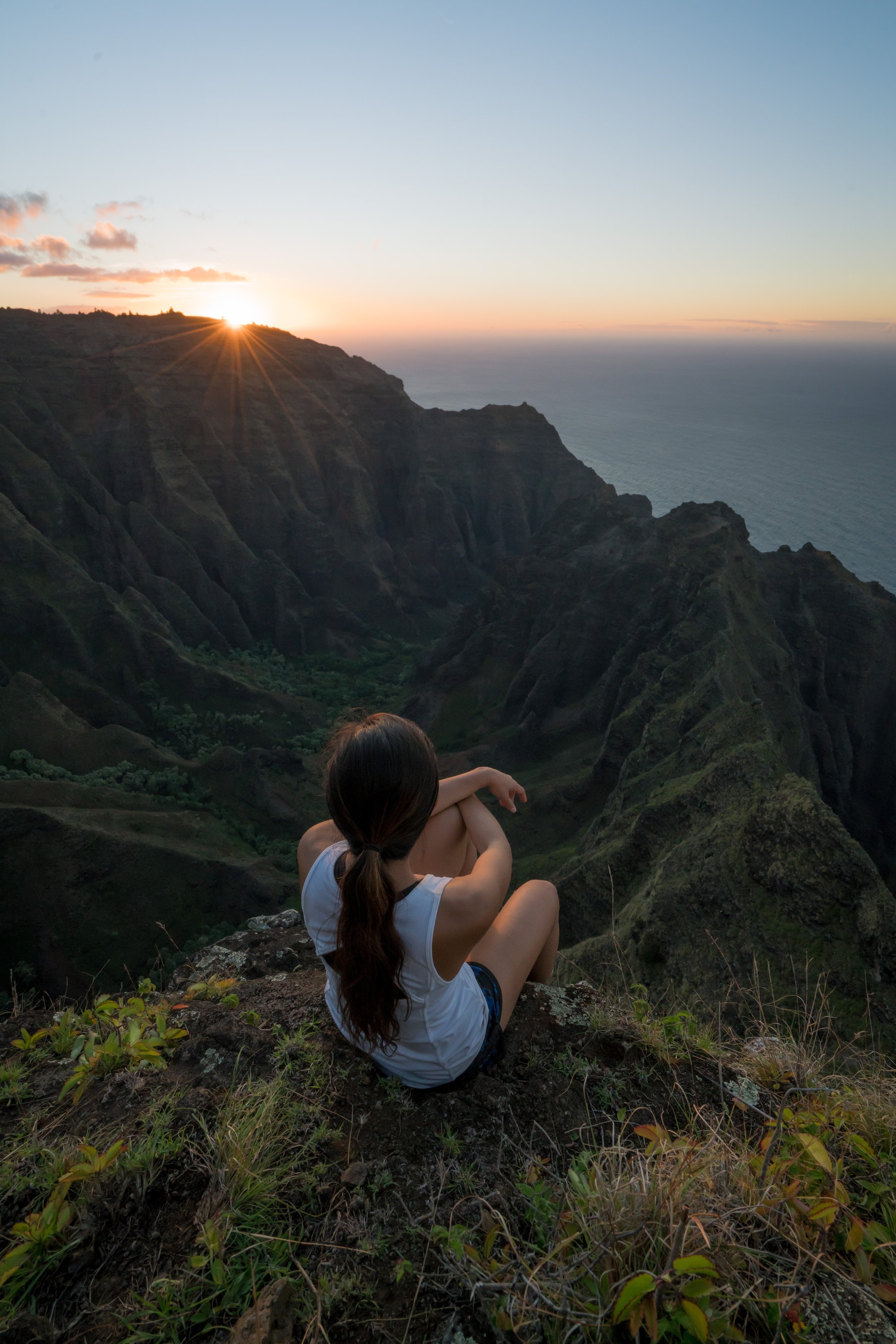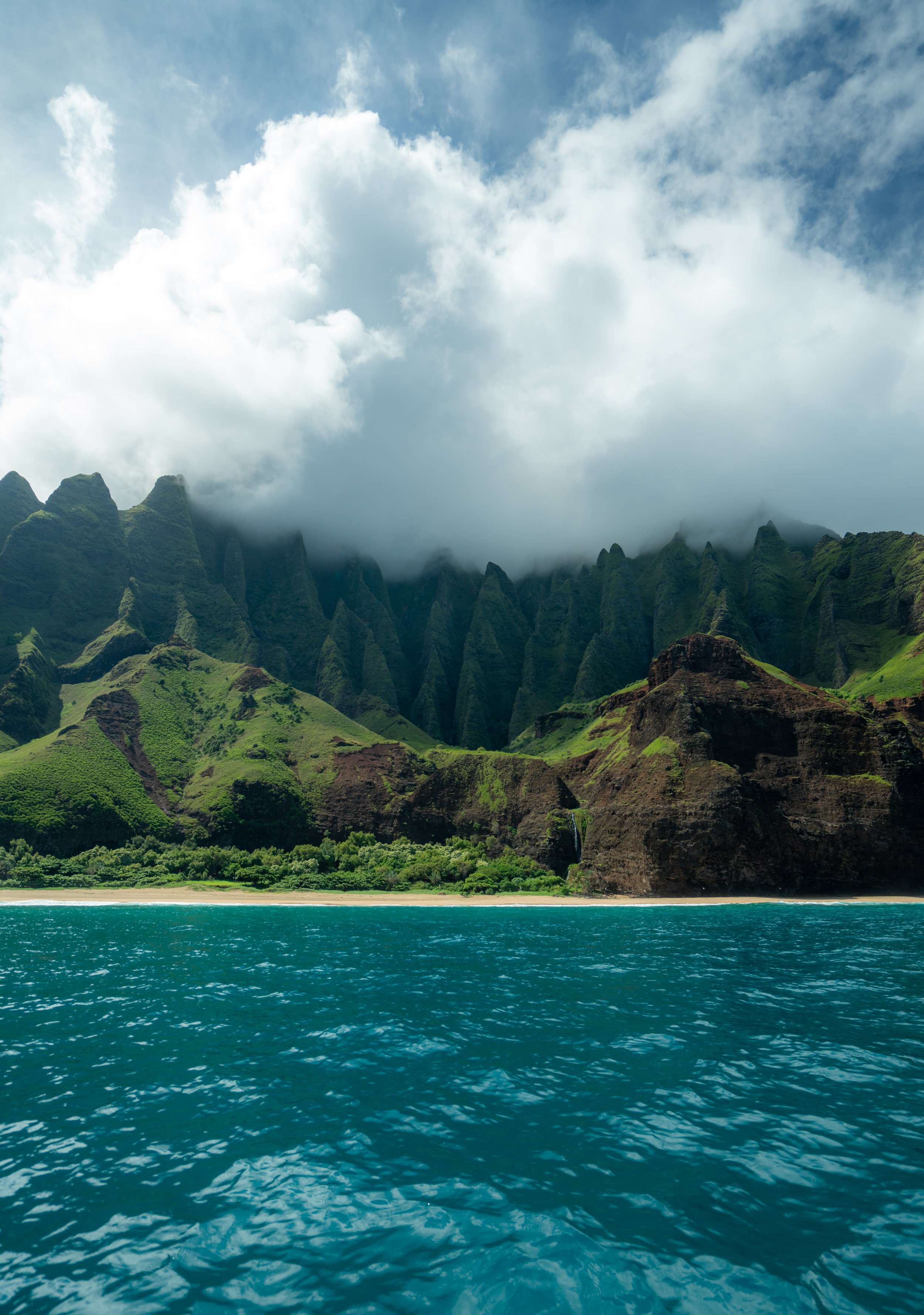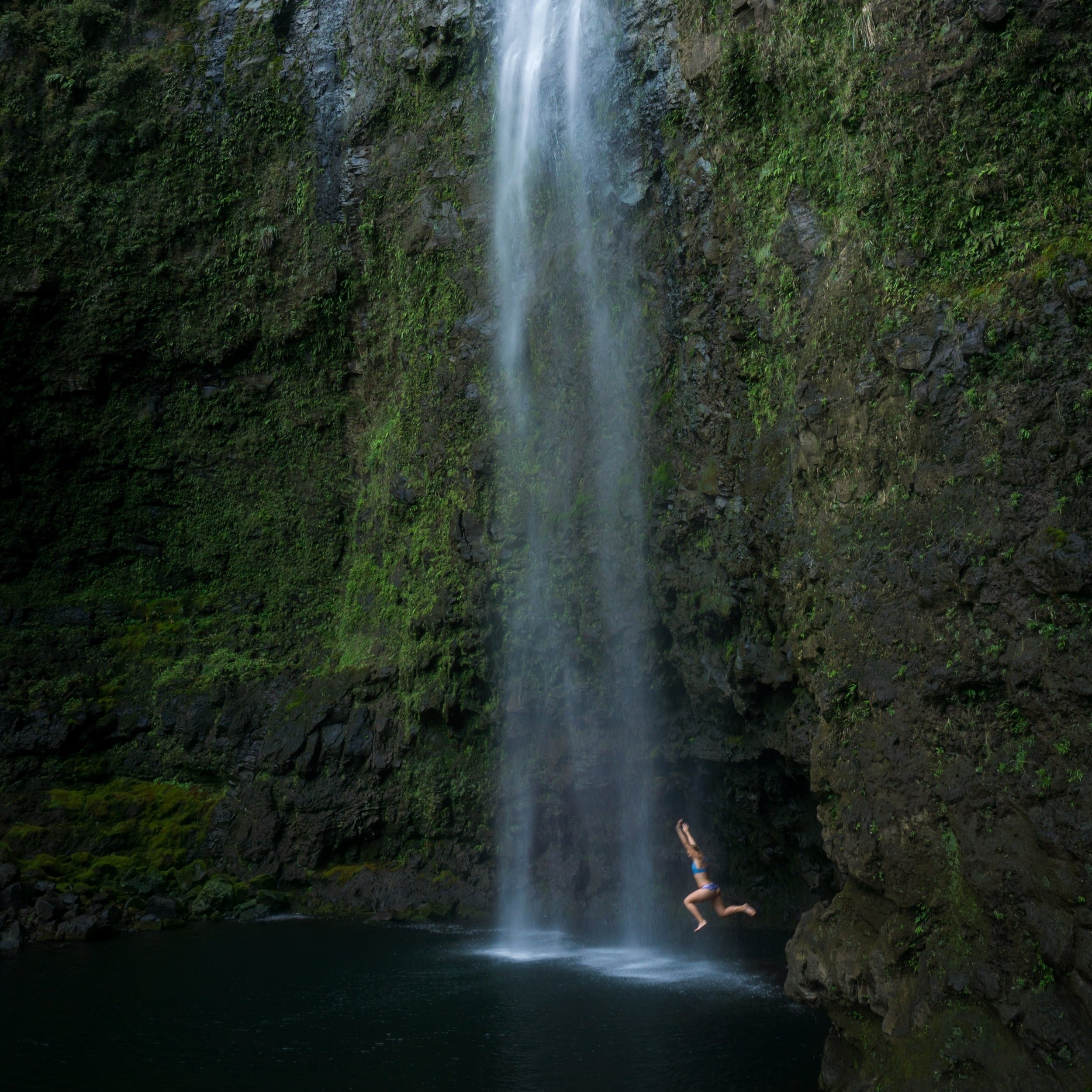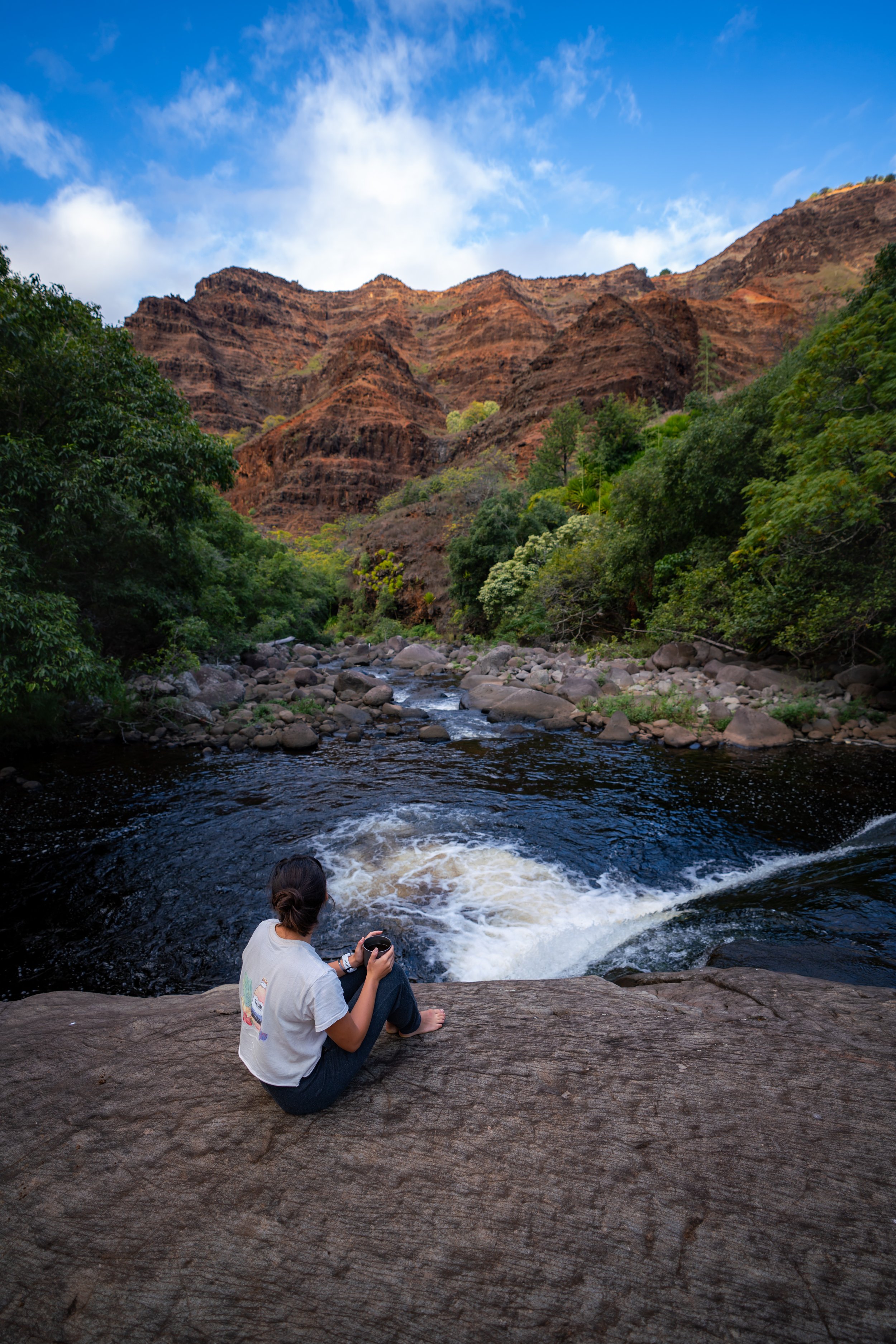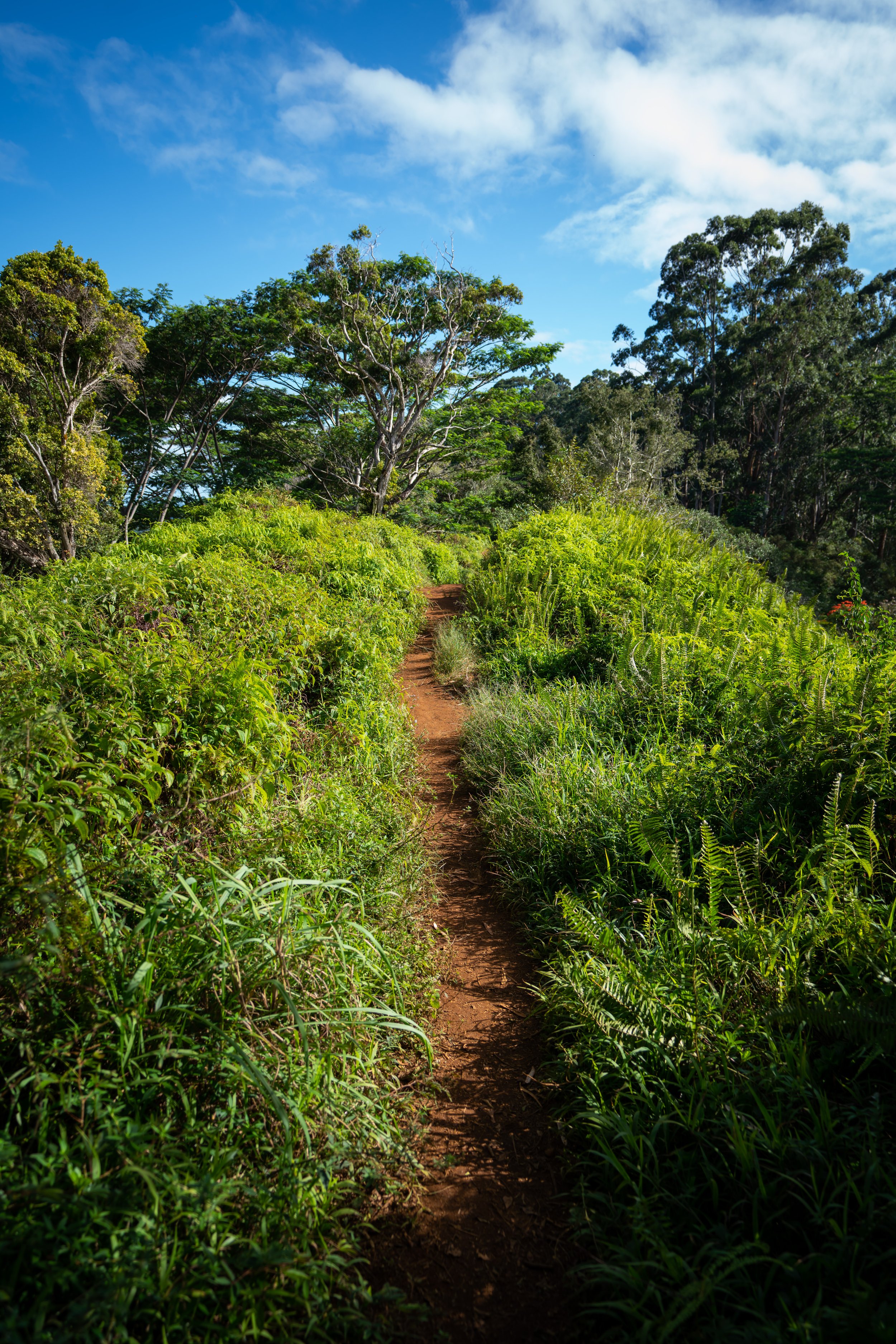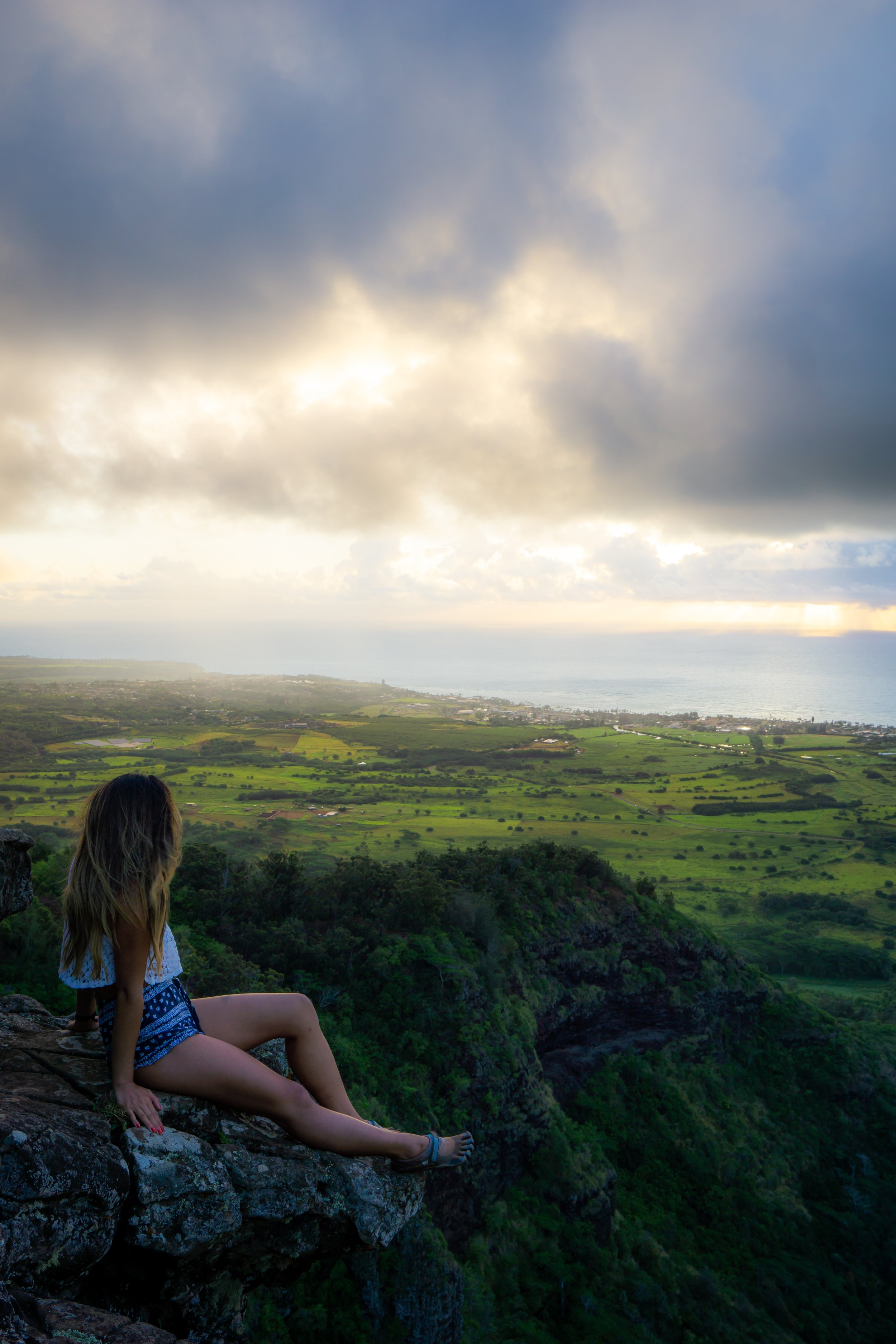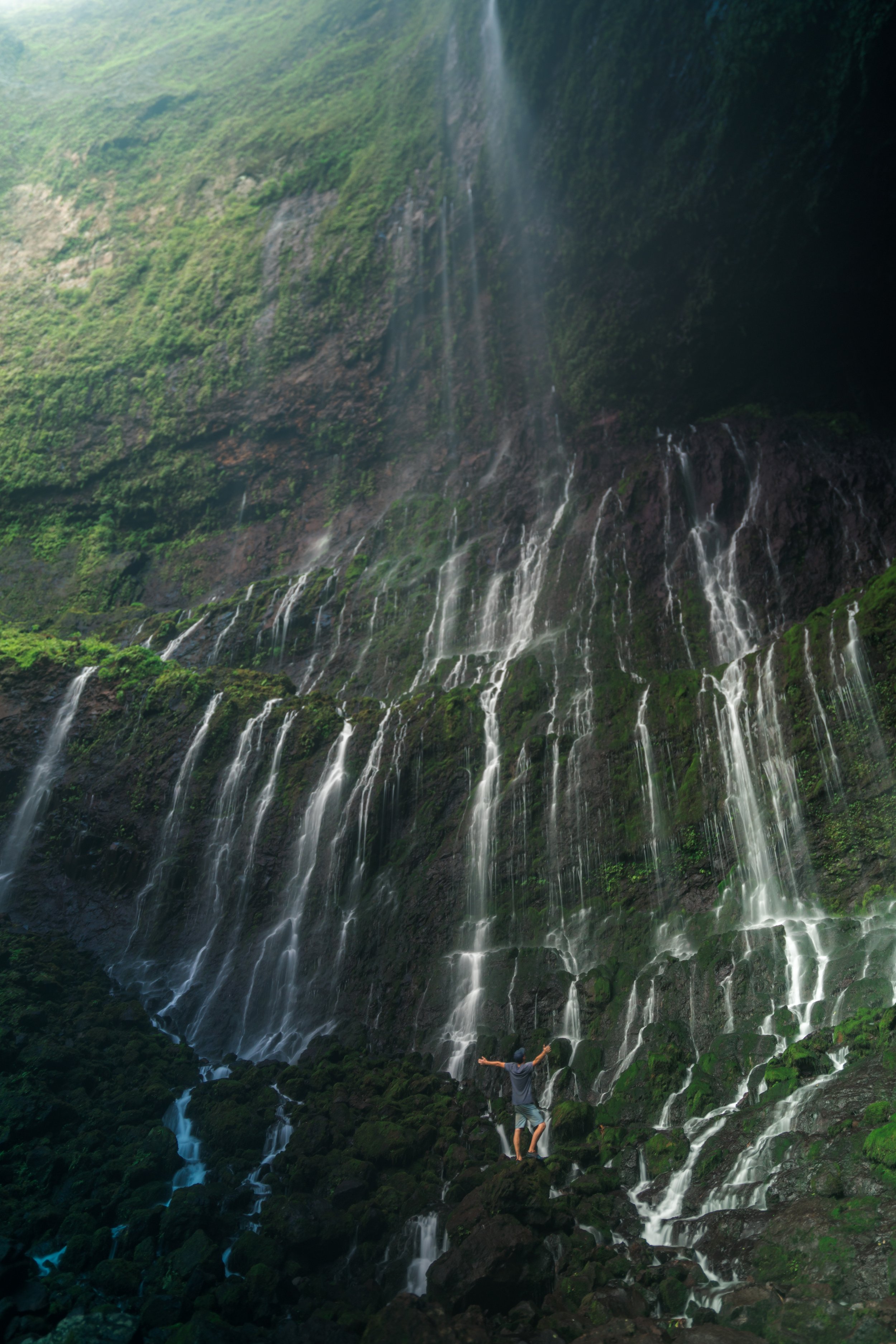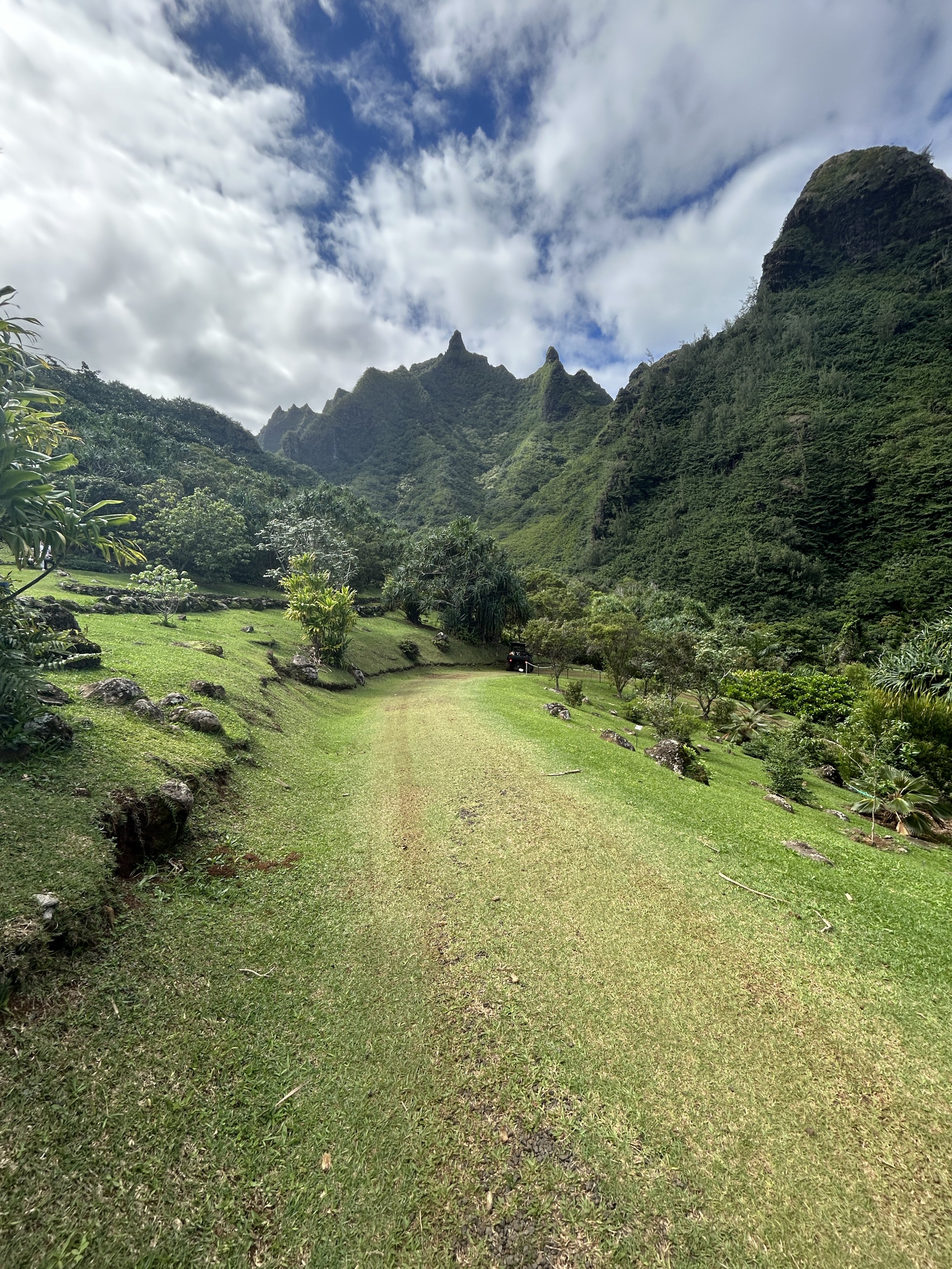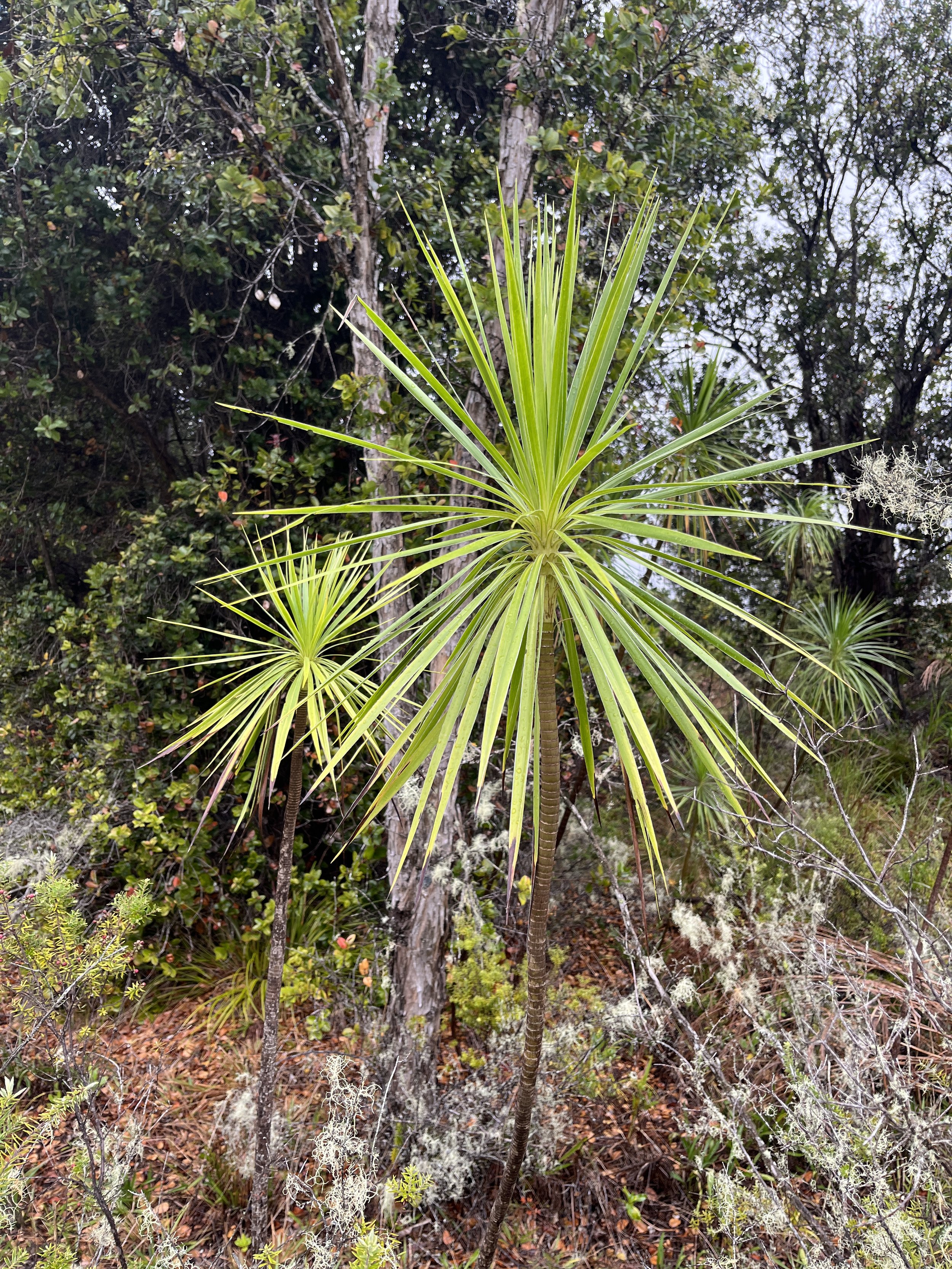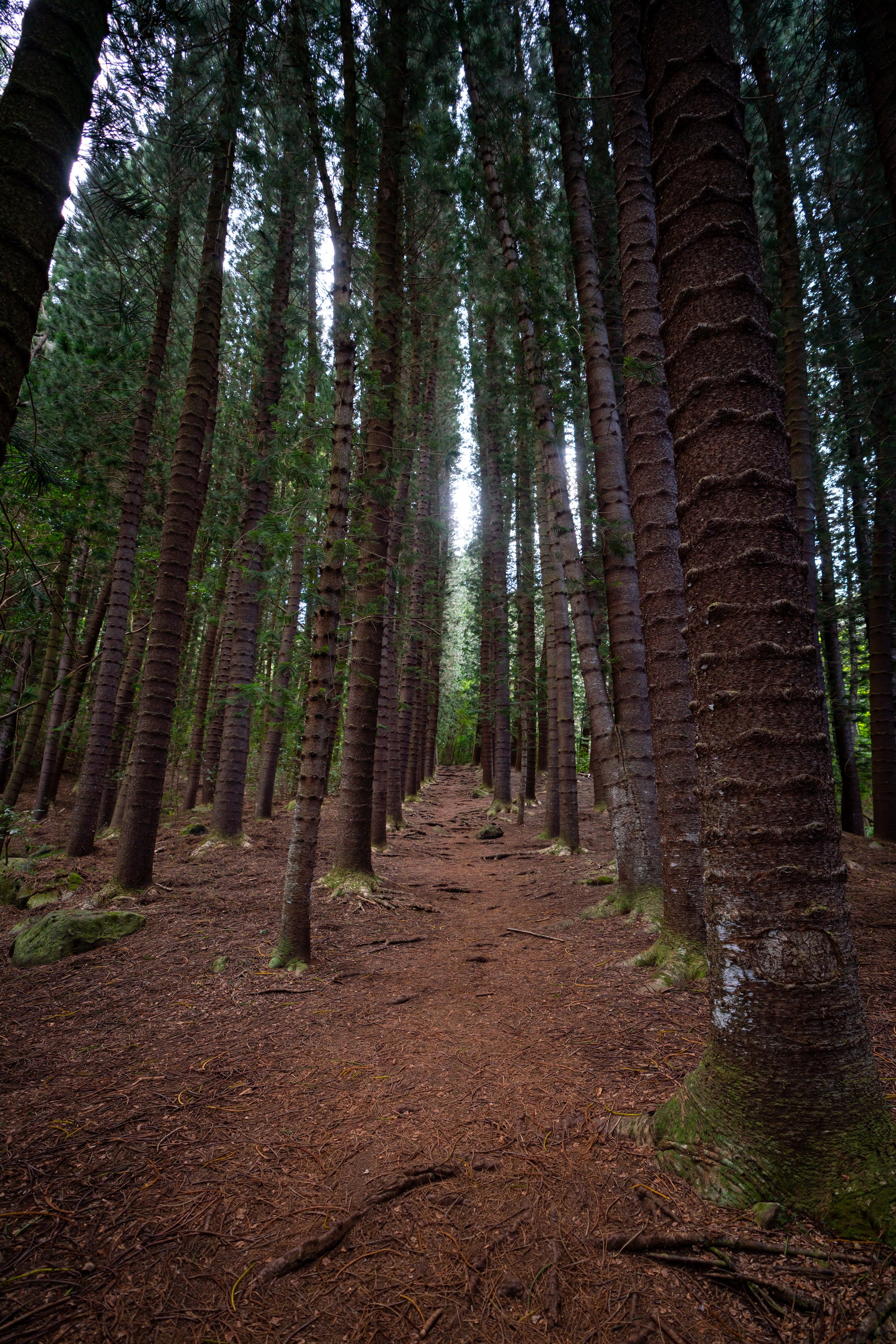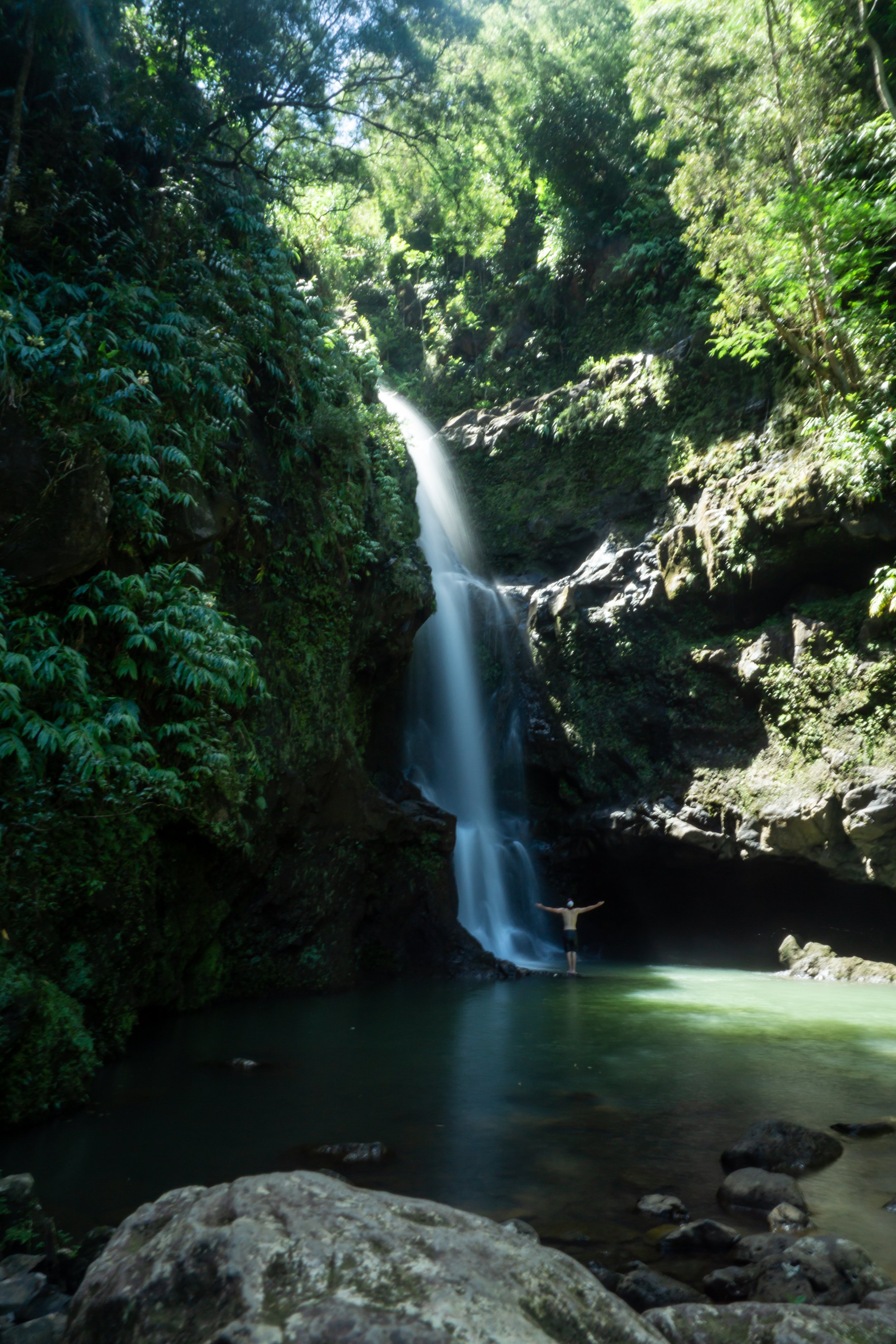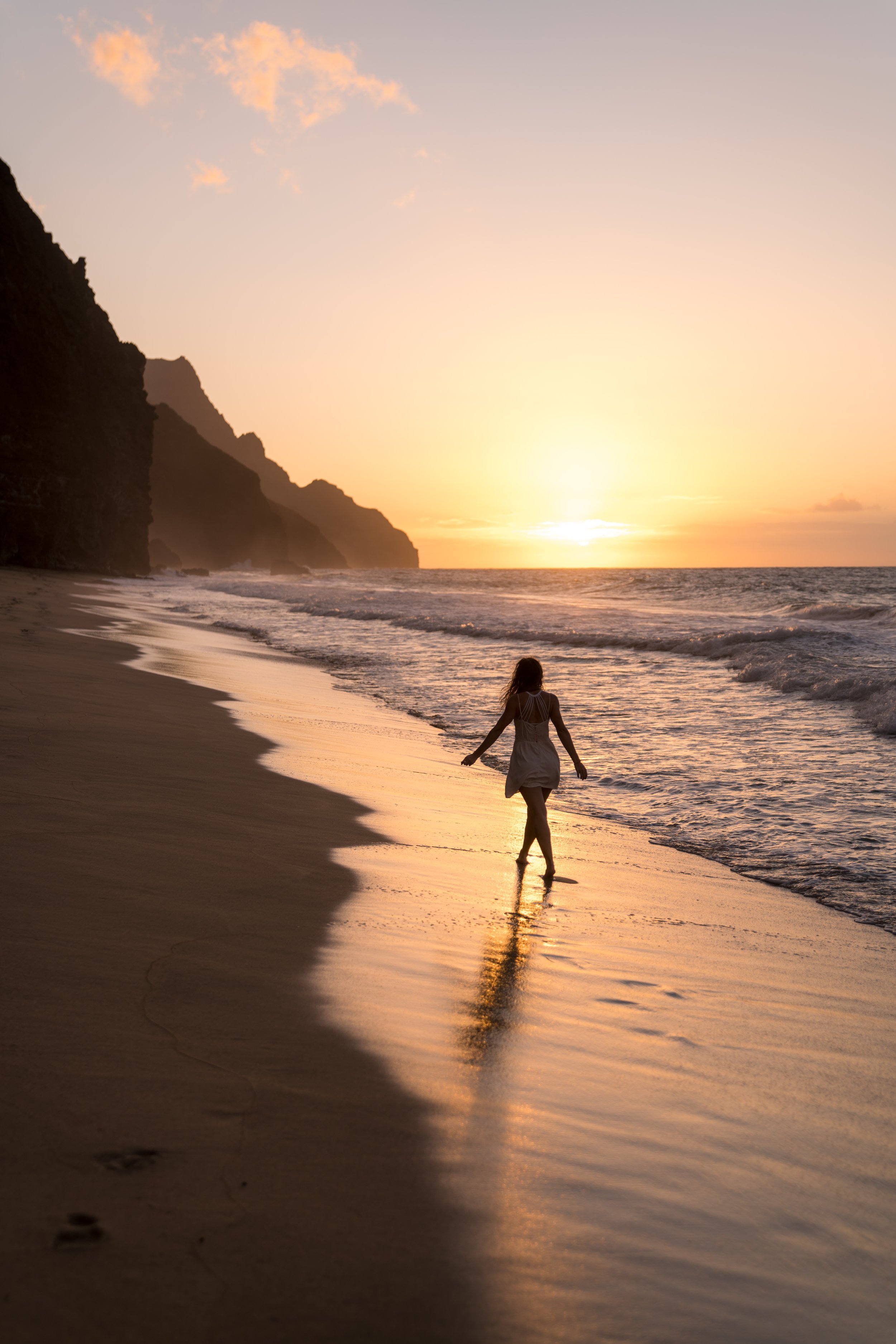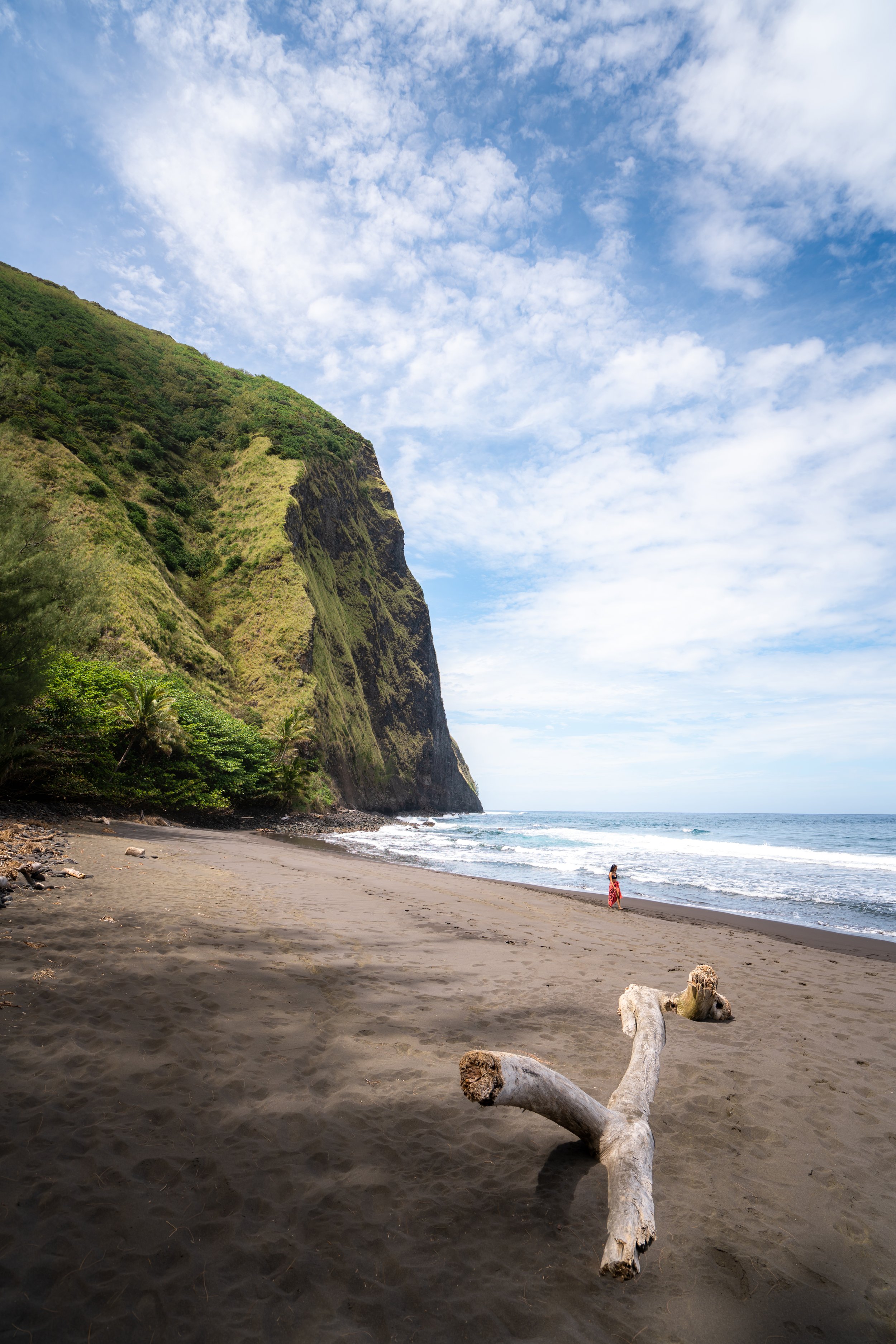Hiking the Hānakoa Falls Trail on Kauaʻi’s Nāpali Coast
Distance (Roundtrip): 1.0 miles / 1.6 km
The Hānakoa Falls Trail is one of three different day hikes that branch off the 11.0-mile (17.7 km) Kalalau Trail, which includes Hanakāpīʻai Falls, Hānakoa Falls, and the Kalalau Valley Trail in order from east to west.
That being said, the Hānakoa Falls Trail is not typically a day hike that begins from Hāʻena State Park, as day hiking the trail would require an overnight Kalalau permit to do it legally, being that there are no day-use permits issued for the Kalalau Trail.
Rather, Hānakoa Falls is typically hiked either on the way to or from Kalalau Beach, with many hikers choosing to skip the side trail altogether unless they had planned for a night or two in Hānakoa Valley.
What I mean is that I’ve hiked up to Hānakoa Falls more than once without ever spending the night in Hānakoa Valley, and I can say from experience that adding an additional 1.0-mile (1.6 km) hike onto an already long day on the trail is typically an unpopular opinion.
However, if you’re doing the entire Kalalau Trail in one day, I highly recommend hiding your big bags off the trail, taking any valuables with you, and walking up the Hānakoa Falls Trail because the beautiful, towering waterfall is worth the effort—especially because taking a big pack off your back makes for a nice break!
How to Get Kalalau Trail Permits?
Kalalau Trail permits can be purchased up to 90 days in advance, and being that the Nāpali Coast is one of the most competitive camping permits in Hawaiʻi, it’s best to reserve your permits right when they are released—which is especially true over any holiday weekend.
Note that only the first date of your trip needs to be at least 90 days out, meaning 91 days and beyond can be reserved on the same permit, so long as the dates are consecutive.
Book Here: Nāpali Coast Wilderness State Park Permits
My Hawaiʻi Hiking Checklist
Obviously, for camping, you will need general backpacking gear. For this reason, I wrote a separate post about what backpacking gear is worth the money, from my experience, and what the best alternatives are to save you money.
Read My Separate Post: Best Ultralight Backpacking Gear
In addition, here is a complete list of must-have things that you will want for any hike on Kauaʻi.
Osprey 3L Water Bladder - The Osprey 3L water bladder is the most universal hiking and backpacking water bladder on the market, and it’s my go-to because of the slide-off seal that allows it to be quickly filled from the top. Additionally, individual parts are easily replaceable, such as the bite valve.
Blister / Heel Protectors - I swear by these cheap, amazing heel protectors to prevent blisters for nearly every kind of hiking and backpacking that I do!
Black Diamond Headlamp - Personally, I recommend the Black Diamond Storm because it is one of the brightest, lightest, and longest-lasting headlamps on the market—and trust me, the weight-to-battery-life ratio really does matter!
Hiking / Trail Running Shoes - Depending on the type of trail, I prefer to use either the Keen Targhee for longer, more rugged hiking or the HOKA Zinal Trail-Running Shoe for lighter, less intense trails. In either case, both have been amazing to me for many years across countless environments, and both can be found in men’s and women’s sizes. - (Men’s Keen / Women’s Keen) (Men’s HOKA / Women’s HOKA)
Waterproof Rain Shell - You never know when it may rain, and I’ve learned over the years that a rain shell is far better than a rain jacket. By this, I mean that it’s best to have something that the water will roll right off of, which is why I recommend the Patagonia Torrentshell 3L available in both men’s and women’s sizes.
High SPF Sunscreen - Packing high-SPF sunscreen is a must for long days outside!
Hiking the Hānakoa Falls Trail
The Hānakoa Falls Trail begins on the west side (Kalalau side) of the Hānakoa Stream, which is roughly 5-6 miles (8.0-9.7 km) from either direction, whether you choose to hike it on your way to or from Kalalau Beach.
This is exactly why many hikers view the Hānakoa Valley campsites as the 'halfway' point on the Kalalau Trail.
While it may seem like the hike should be fairly straightforward, the Hānakoa Falls Trail can be a bit tricky to follow, especially in the beginning where the gulch is the widest.
By this, I mean there are a number of unmarked, vague splits in the trail, such as the one below, where the correct trail is the less obvious path to the right, not the more obvious trail on the left.
Again, here’s a second instance where the correct trail is the path on the right, not left.
Toward the end of the hike to Hānakoa Falls, the trail traverses a hillside high above the Hānakoa Stream, where you need to be careful not to fall.
The slope to the left is steeper than it may seem in these photos.
Hānakoa Falls
After just 0.5 miles (0.8 km) from the Kalalau Trail junction, the trail ends at the 300-ft. (91 m) Hānakoa Falls.
However, the total height, which can be seen when entering into Hānakoa Valley from the east, is reported to be about 1,000 ft. (305 m) tall!
All said, Hānakoa Falls can be a great place to swim, take a break from the Kalalau Trail, or add a small adventure to your day if you choose to spend the night in Hānakoa Valley. However, it’s important to know that rockfall can be common in areas, like Hānakoa Falls, as I have seen one narrowly miss someone swimming in the pool at Hanakāpīʻai.
Native Plants on the Hānakoa Falls Trail
Being that the Hānakoa Falls Trail is so short and that the Kalalau Trail is heavily invaded with non-native species, the hike to Hānakoa Falls unfortunately features relatively few native species.
That being said, endemic Lama trees, also called Ēlama, dominate many parts of Hānakoa Valley, and being the case, I think that the valley is one of the best places to look for these beautiful trees across the entire 11.0-mile (17.7 km) trail.
If you would like to know more about these and tons of other native Hawaiian plants from across the islands, I encourage you to check out my separate post linked below.
Read My Separate Post: Native Hawaiian Plant Guide
More Kauaʻi Adventures
If you’re interested in reading about some more amazing Kauaʻi adventures, check out my separate posts below!
Best Hotels & Vacation Rentals on Kauaʻi
Since the best things to do on Kauaʻi are located on all different sides of the island, I recommend starting your search on VRBO.
You may want to stay some nights in Poʻipū, some nights in Kapaʻa, and even some nights on the beautiful North Shore, but this way you can plan out places to stay and adventures on all different sides of the island!
Best Way to Book Rental Cars!
I travel quite a bit, and I know firsthand that finding a good rental car deal can be a challenge, but that’s why I recommend comparing all of your options with Discover Cars.
In short, Discover Cars is a well-known, reputable business that allows you to search for the best deal across companies, and they have the best full-refund cancellation policy I’ve ever seen, valid up to 72, or sometimes even 48, hours prior to your reservation!
Book Here: Discover Cars
Visiting Other Islands
If you are visiting Kauaʻi or heading to another island, check out some of my personal recommendations for Oʻahu, Maui, Kauaʻi, Molokai, Lānaʻi, and Hawaiʻi Island (Big Island) in these separate posts.
If you’re trying to decide which island is right for your visit, check out my overview about each island in the post below.
Read My Separate Post: What is the Best Hawaiian Island to Visit?
What is the Best Time of Year to Visit Hawaiʻi?
The weather in Hawaiʻi can often appear to be warm and beautiful throughout the year, but in my experience, there is a lot more to consider when planning what time of year to visit the islands, such as what island you are considering, what sides of each island do you plan to stay, what activities are you most interested in, the wildlife, and countless other nuanced variables that can all impact the type of trip you can expect to have.
For these reasons, I highly recommend reading through my separate article to not only understand my thoughts regarding the best time of year to come to Hawaiʻi but also what you need to consider based on the time of year that you plan to visit.
Read My Separate Post: What is the Best Time of Year to Visit Hawaiʻi?
Safety
All hikes in Hawaiʻi should not be compared to trails outside of the islands, and hikers should exercise due caution on every adventure, given that many are extremely dangerous.
By this, I mean that Hawaiʻi is known for hot, humid weather, steep, dramatic, and unstable cliffs, and flash floods, which can occur without warning. Therefore, it is important that you check the local forecast, understand the physical condition of your entire group, and pack sufficient food and water before attempting any adventure.
Disclaimer
All information provided on this blog is for informational purposes only and is not intended to be a substitute for information or advice from qualified professionals or managing agencies.
Noah Lang Photography LLC makes no representations or warranties regarding the accuracy or completeness of the information provided here, and readers should use their own discretion, judgement, and seek professional advice where it is appropriate.
Furthermore, Noah Lang Photography LLC shall not be held responsible for any injuries, lost individuals, or legal issues arising from the use of information provided on this website, and if applicable, the above safety disclaimer should be referenced to provide a generic overview of the risks involved.
All said, the content on this blog is for the sole use of Noah Lang Photography LLC, and unauthorized use or reproduction of this content is strictly prohibited.
Disclosure
This post is not sponsored.
However, some of the links in this post are affiliate links, which means that I may earn a small commission if a purchase is made through one of those links. This commission comes at no additional cost to you, and I only recommend products that I personally use and believe will add value to my readers. Thank you for your support, which enables me to continue creating more!
To read the full privacy policy, click here.

About This Blog
Noah Lang Photography, also known as @noahawaii, is 100% reader-supported!
I do not accept guest articles or sponsored content of any kind on my blog, which is why, if you enjoy the outdoor and travel content I create, please consider buying me a coffee!
I appreciate your support, which helps me continue to keep this blog alive!










